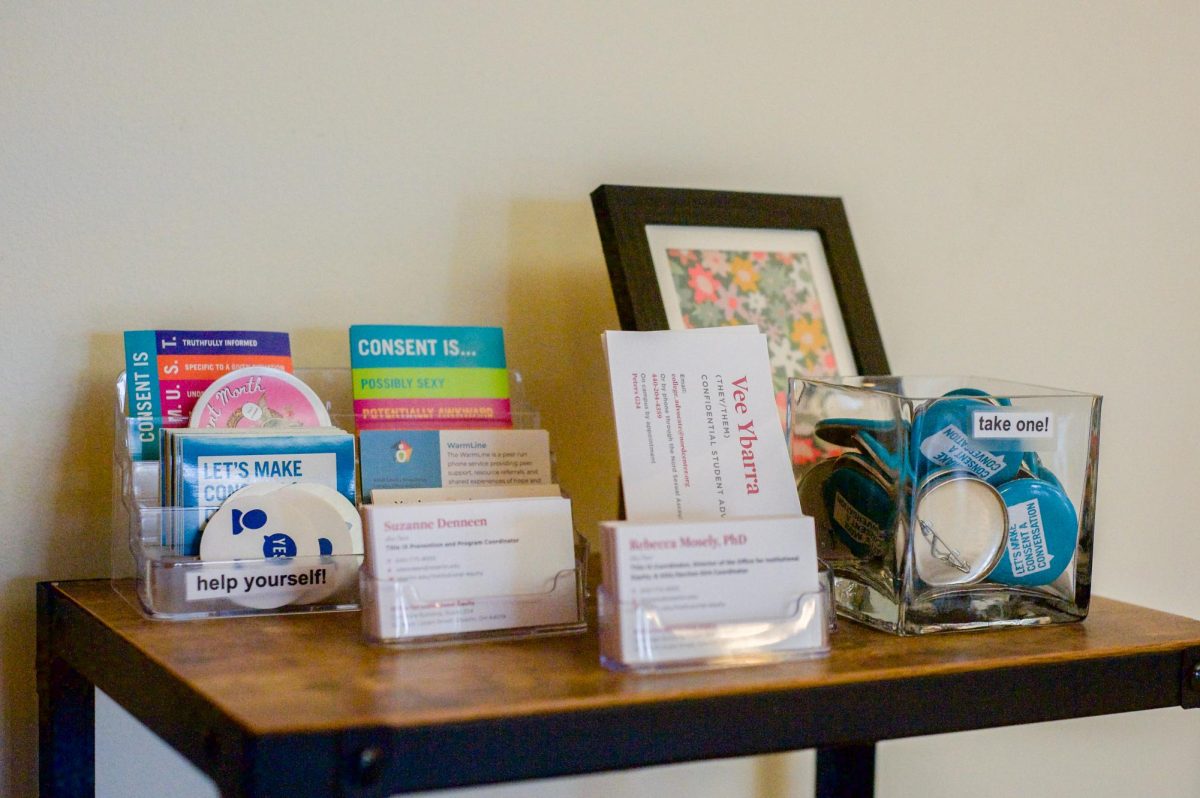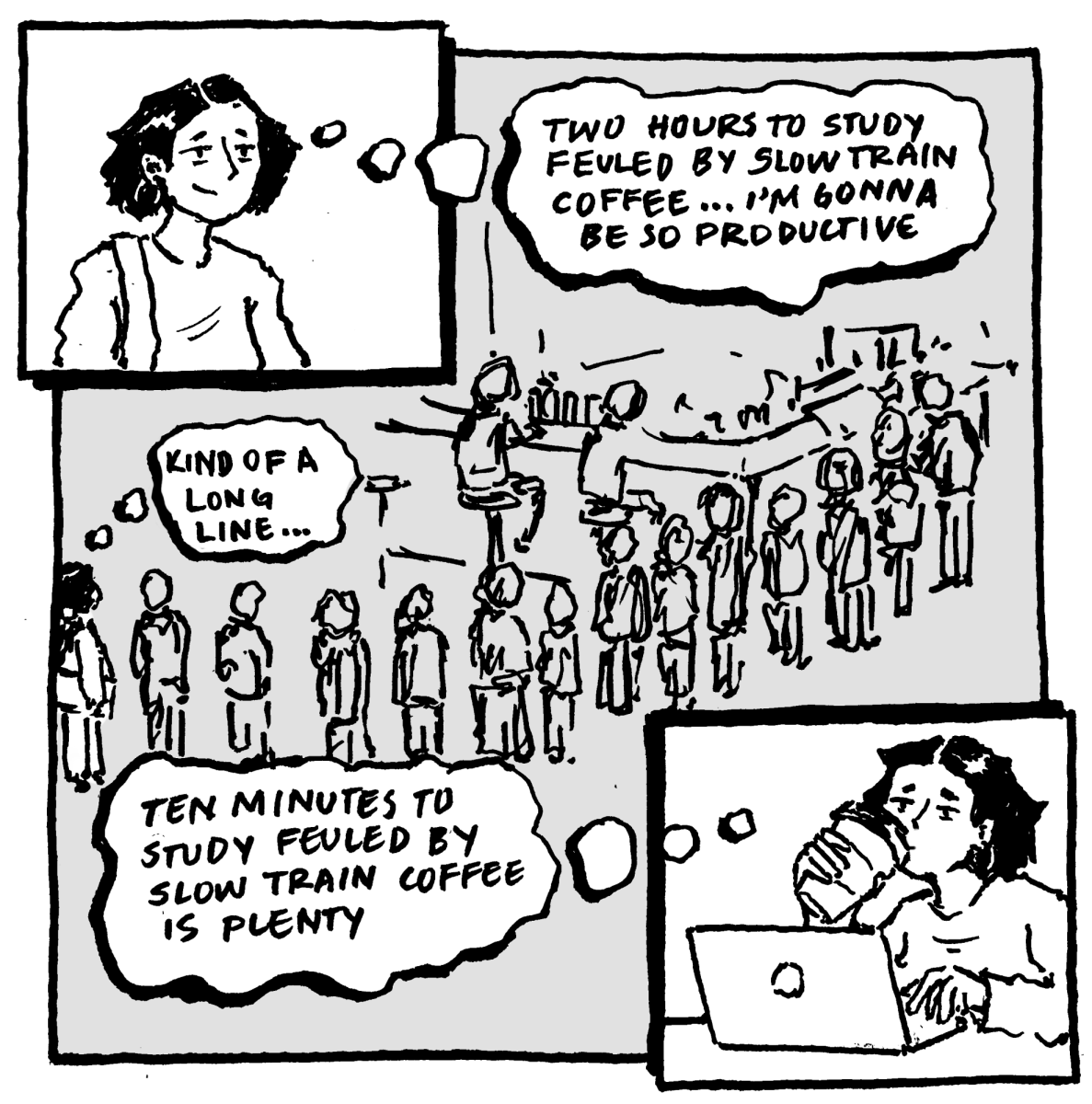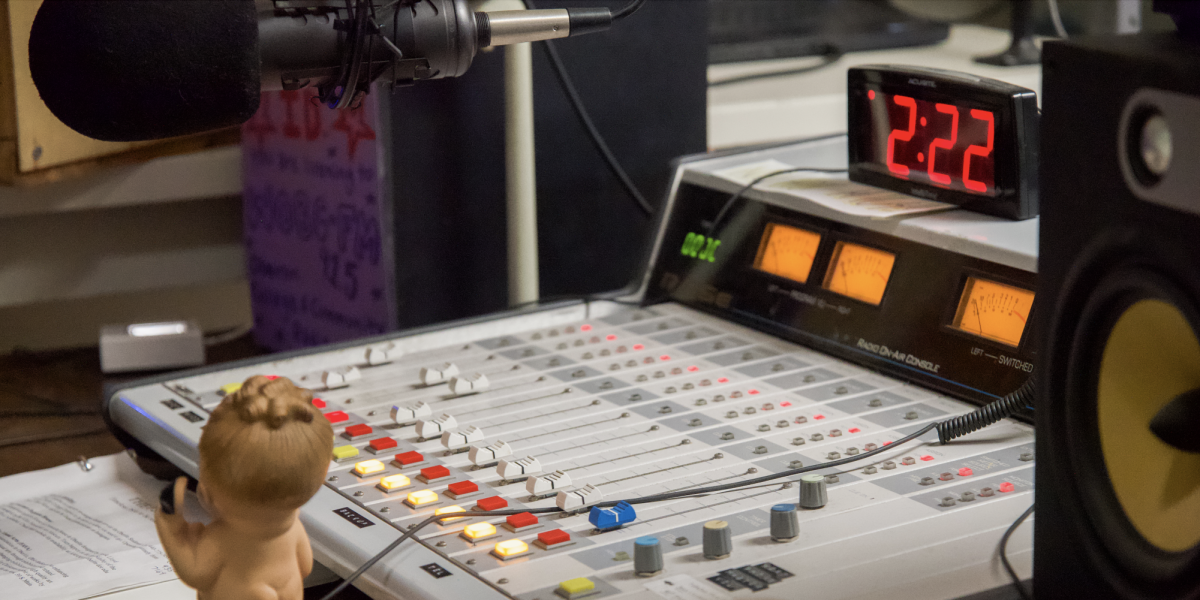Pershall Speaks on Mental Illness, Importance of Friendship
April 13, 2012
Stacy Pershall, author of Loud in the House of Myself: Memoir of a Strange Girl spoke to students Wednesday evening about her lifelong struggle with mental illness, misdiagnosis and a revolving door of different medications and side effects. Pershall, who garnered internet-fame when her suicide attempt was captured by her home webcam, said that since receiving an accurate diagnosis for her borderline personality disorder, she has been able to feel more comfortable in her own skin — which is, incidentally, covered in tattoos.
Pershall, now 40, recalled the difficulties of growing up in a small Baptist town in Arkansas, where she was bullied incessantly throughout school. Made an outcast at a young age for her intelligence and sensitivity, Pershall remembers being known as the girl who, in her own words, “skipped recess because [she] was really into The Great Gatsby.” The result of this isolation was a sense of displacement that led Pershall to eating disorders and frequent trips to her closet to lie in the fetal position. Other girls at school would throw insulting notes at Pershall, who would then return home and write these insults on her skin in black Sharpie, then enter the bathroom and scrub her skin raw to remove the ink because she felt that she “deserved that pain.” By 10th grade, Pershall had stopped trying to fit in and fully “embraced [her] weirdness.” Pershall told Oberlin students, “My attitude at that point was, ‘I’m going to reject you before you can reject me.’”
By the time she was in her mid-20s, Pershall was experiencing “crazy mood swings.” In 1990, while attending college, Pershall met with a psychiatrist who, after talking to Pershall for 15 minutes, diagnosed her with bipolar disorder, wrote her a prescription for lithium and sent her on her way.
Thus began Pershall’s struggle with medication. In two weeks on a dose of lithium that was much too high, Pershall gained 15 pounds. While on the drug, she needed to receive blood tests every six months to ensure that the lithium wasn’t destroying her liver. Over the next 15 years of her misdiagnosis, Pershall was prescribed a total of 24 different drugs, all accompanied by dangerous side effects and potential for addiction. Life continued for Pershall — she graduated from college, went on to grad school, had various relationships — but the mental illness and the pills followed wherever she went, a constant shadow on every success and failure.
The turning point in her illness for Pershall came after a suicide attempt in the summer of 2001, following a break up with her boyfriend via email. Pershall raided the bathroom pantry and began swallowing every pill she could find — and as someone who had struggled with mental illness all her life, there were quite a few. Her saving grace was a woman watching Pershall over the Internet, via the many webcams that Pershall had set up throughout her Brooklyn apartment. Pershall’s viewer immediately called an ambulance and paramedics arrived on the scene shortly after and rushed Pershall to the hospital, where she spent the night getting her stomach pumped in the midst of violent seizures. A few days later, Pershall returned home to find reporters from the New York Post and every sleazy magazine imaginable camping outside her doorstep, all hoping to catch a glimpse of the “suicide-cam girl.” As the footage of her attempted suicide circulated the Internet, anonymous posters berated Pershall and mocked her for failing to commit suicide. But what finally convinced Pershall to seek help was a conversation with two of her best friends. “They told me that they thought I was an amazing person,” Pershall said, “but that they couldn’t keep being my friends if I didn’t realize it too and get help.” A few words of support from those who loved her were all it took to change the course of Pershall’s life.
“That was the turning point for me,” Pershall said to Oberlin students. “I’d never really had someone profess their love for me like that and it meant everything.”
Pershall sought help for her illness, and in 2004 she was finally diagnosed with borderline personality disorder after 15 years of treatment for bipolar disorder. When her psychiatrist showed her the list of criteria for a diagnosis of borderline personality disorder. Pershall professed, “I thought, ‘yes, that’s me.’” As she read down the list, Pershall recalled, “It felt like someone had been following me around my whole life, taking notes on my behavior.”
Pershall’s psychiatrist started her on medication for borderline personality disorder and recommended that she begin dialectical behavior therapy, a form of therapy created specifically for those suffering from BPD. In DBT, patients learn about and practice alternatives to the maladaptive feelings and behaviors that are a product of misfiring neurons between the amygdala and the frontal lobe. Pershall explained to students the strategies she learned while attending a three-day-a-week DBT program at New York-Presbyterian Hospital. “You use other intense sensations to replace the urge to binge eat or purge or whatever,” she said. One such strategy she was taught was to hold ice cubes in her hands; another was to eat wasabi. The goal is to use these sensations to replace the more harmful practices in which BPD patients usually engage.
Pershall has also used tattooing as a means of therapy. Pershall recalled how she used to claw at her face and body just to see the marks left in the wake of her fingernails, to know that she was real. Now, she tattoos herself instead. “As long as I can see the tattoos,” Pershall explained, “they help me know I’m real. It’s helped me live in my own skin.”
In the wake of publishing her memoir, Pershall continues to be an advocate for mental health and gives lectures all around the country to students, community members and clinicians alike. Pershall will always have to cope with BPD — there is, after all, no cure for mental illness — but she is currently taking the least amount of medication she has ever been on since her initial misdiagnosis. The strategies she learned in DBT are second nature to her now, and for the first time in her life, she professed, she feels “stable.” Recalling the harassment she faced throughout school and the encouragement from her friends that changed her life, Pershall ended her lecture to Oberlin students with a word of advice: “The most effective thing to say to someone you suspect has BPD is ‘I love you and I won’t leave you’… The important thing to remember is that bullies take lives, but friends save them.”






















